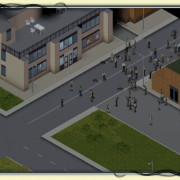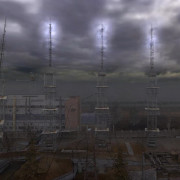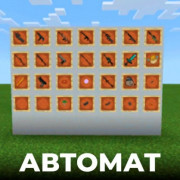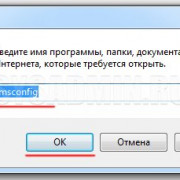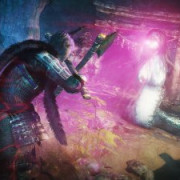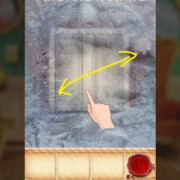Команды / звук
Содержание:
Игровой процесс[]
Инвентарь творческого режима
Творческий режим можно выбрать в процессе создания мира. Перейти в режим Творчества можно командой . В многопользовательской игре режим игры может быть изменён индивидуально для каждого игрока командой . Это означает, что отдельные игроки могут играть в разных игровых режимах (по выбору оператора).
В творческом режиме нормальный экран инвентаря заменяется на экран выбора элементов, который представляет собой интерфейс с закладками, в котором содержатся все блоки и предметы, добавленные в игру.
Существует также функция поиска. Одна вкладка похожа на инвентарь в режиме Выживания, так как там присутствуют слоты для брони (но отсутствует сетка крафта). Другие вкладки содержат продукты питания, строительные блоки, декоративные блоки и др. Некоторые предметы ведут себя иначе, чем в режиме Выживания, например пустые вёдра никогда не заполняются водой или лавой, а заполненные вёдра никогда не опустошаются.
Брошенные предметы могут быть подобраны игроком, но если ячейки быстрого выбора уже забиты, то предмет перейдет в инвентарь Выживания. Если ячейки быстрого выбора и сам инвентарь заполнены, предметы по-прежнему могут быть подобраны (в отличие от режима Выживания), но сам предмет будет уничтожен и не появится ни в одном из слотов инвентаря.
Для того чтобы взлететь, достаточно дважды нажать прыжок (по умолчанию Пробел). Используйте клавишу прыжка, чтобы подняться и клавишу приседания, чтобы опуститься (по умолчанию ⇧ Левый Shift). Для перемещения используйте стандартные клавиши передвижения (по умолчанию WASD). Игрок может отключить режим полёта с помощью двойного нажатия прыжка снова, при этом игрок упадет на землю.
Чтобы взять блок в инвентарь, кликните средней кнопкой мыши по блоку. В отличие от режима Выживания, выбранный блок появится в одной из ячеек быстрого выбора, даже если такой блок уже присутствует в инвентаре игрока. В SMP, любые предметы не из творческого инвентаря и зачарованные предметы будут перемещены в инвентарь. Творческий режим также позволяет дублировать предметы с помощью рамок. При помещении предмета в рамку, сам предмет не исчезнет из вашей руки. Причём, если нацелившись на предмет, нажать цифру слота от 1 до 9, то этот слот заполнится стаком предмета, на который вы навели мышкой. Но, если тот слот бы заполнен другим предметом, тот предмет будет удалён из вашего быстрого слота и вернётся в вкладку.
Мобы будут по-прежнему спаунятся так же, как и в Выживании (в том числе и из спаунеров), но враждебные мобы будут нейтральными и не будут пытаться атаковать игрока.
Нерушимые блоки (коренная порода, командный блок, барьер или рамки портала в край) могут быть уничтожены в творческом режиме. Если игрок опустится слишком низко в Пустоту, то он умрёт, однако игрок может летать над Пустотой, при условии, если он не будет опускаться ниже уровня Y=-64.. Это единственный способ умереть в творческом режиме, не считая команды . В Bedrock Edition умереть в творческом режиме нельзя даже с помощью команд, в случае падения в пустоту по ней можно будет ходить как по твердым блокам.
Блоки, которые могут быть уничтожены другими способами (падение песка и гравия или яйцо дракона), могут быть подобраны игроком.
Если игрок держит меч в руке, то он не сможет разрушать блоки.
Если игрок будет лететь высоко над облаками, то будут видны два солнца, хотя на самом деле это и солнце и луна светят одновременно.
Некоторые предметы доступны только в творческом режиме, например, яйца призывания
В Xbox 360 издании создание новых миров с творческим режимом или вход в уже существующие миры с творческим режимом, приведет к тому, что будут отключены обновления достижений и списка лидеров, но нет другого влияния на геймплей. Другими словами, достижения и список лидеров работают только в мирах с режимом «Выживание». Инвентарь в Xbox 360 издании аналогичен компьютерной версии.
sounds.json
This JSON defines sound events, and defines which sound files they play, the subtitle, etc. Sound events are identified with s. should be located at the root of a resource namespace (), and it defines sound events in that namespace ( defines sound events in the namespace .).
A full specification is available on the vanilla wiki, but this example highlights the important parts:
Underneath the top-level object, each key corresponds to a sound event. Note that the namespace is not given, as it is taken from the namespace of the JSON itself. Each event specifies a localization key to be shown when subtitles are enabled. Finally, the actual sound files to be played are specified. Note that the value is an array; if multiple sound files are specified, the game will randomly choose one to play whenever the sound event is triggered.
The two examples represent two different ways to specify a sound file. The wiki has precise details, but generally, long sound files such as background music or music discs should use the second form, because the “stream” argument tells Minecraft to not load the entire sound file into memory but to stream it from disk. The second form can also specify the volume, pitch, and weight of a sound file.
In all cases, the path to a sound file for namespace and path is . Therefore points to , and points to .
Структура файла[]
Этот файл хранится в формате JSON, но здесь представлен в формате NBT.
-
Корневой объект
-
Звуковое событие. Название этого объекта — это название звукового события, которое сделано по образцу пути к звуковому файлу (как «random.break»). Все стандартные звуки находятся в таблице ниже.
- category: Категория, к которой относится этот звук. Возможные названия категорий: (окружение), (погода), (игроки), (дружелюбные существа), (враждебные существа), (блоки), (музыкальные блоки), (музыка), (общее) и (голос/речь). Эта строка даёт звуковой системе понять к какой категории относится то или иное звуковое событие, так что громкость может быть отрегулирована на основании того, какие параметры звука устанавливаются для каждой категории.
- replace: true/false. Используется только в ресурспаках. Если true, то звук, записанный в sounds, заменит звуки, записанные в стандартном файле sounds.json для этого звукового события. Если false, то записанные звуки будут добавлены в стандартный список звуков. Необязательно. Если нет, по стандарту устанавливается значение false. В версиях до 1.7.6-pre1 эта строка проигнорирована из-за ошибки.
-
sounds: Звуковые файлы, которые использует это звуковое событие. Один из звуков случайно выбирается для проигрывания когда звуковое событие запущено. Изменяемо.
- Путь до звукового файла из папки «sounds». Использует «/».
-
Звуковой файл. Этот объект используется только в случае, если звуку нужны дополнительные строки.
- name: Путь до этого звукового файла из папки «sounds». Использует «/» вместо «\». Также может быть названием другого звукового события.
- volume: Громкость с которой будет воспроизведён этот звук. Значение от 0.0 до 1.0. Если нет, по стандарту 1.0.
- pitch: Изменяет высоту звука. Если нет, по стандарту 1.0, но могут быть выбраны значения выше и ниже.
- weight: Шанс, с которым этот звук будет выбран для воспроизведения, если произошло звуковое событие. По умолчанию 1. Пример: при значении 2 звук будет воспроизводится в 2 раза чаще. Допускаются только целые значения.
- stream: true/false. Если true, то этот звук будет передаваться прямо из файла. Рекомендуется устанавливать значение true для всех длинных звуков, чтобы предотвратить падение производительности. Используется для всех звуков в категориях «music» и «record» (кроме звуков нотного блока), так как почти все звуки этих категорий длятся более минуты. Необязательно. По умолчанию false.
- type: Возможны два значения: «sound» и «event»; «sound» воспроизводится с именем файла, в то время как «event» воспроизводится с уже определённым событием. Если значение не установлено, устанавливается «sound».
-
Звуковое событие. Название этого объекта — это название звукового события, которое сделано по образцу пути к звуковому файлу (как «random.break»). Все стандартные звуки находятся в таблице ниже.
Sound slots
A_PlaySound supports playing sounds on eight sound channels (while A_StartSound supports more than that), indexed from 0 to 7. Playing a sound on a channel overrides any sound playing on the same channel, except for 0 (aka CHAN_AUTO), which first searches for a free channel, starting from 7 and decreasing until a free channel is found. If none of the channels are free, the sound is played on slot 0, overriding any sound playing there. The following constants can be used for sound slots:
- CHAN_AUTO (0)
- CHAN_WEAPON (1)
- CHAN_VOICE (2)
- CHAN_ITEM (3)
- CHAN_BODY (4) — The default, for historical reasons.
- CHAN_5 (5)
- CHAN_6 (6)
- CHAN_7 (7)
These constants can also be represented as numbers, such as: A_PlaySound("sound/name", 5). The slot parameter can be further combined (using the | operator) with the following modifier flags:
- CHAN_LISTENERZ (8) — Sound is played from the listener’s Z-height. (Verification needed)
- CHAN_MAYBE_LOCAL (16) — Sound is subject to and will not play if the sound is made by an actor other than the local player’s camera when compatibility flag is enabled.
- CHAN_UI (32) — Sound is considered an interface sound and is not recorded into savegames.
- CHAN_NOPAUSE (64) — Sound is not paused by menus and will play through time-stopping powerup effects.
- CHAN_LOOP (256) — Sound loops.
- CHAN_NOSTOP (4096) — Do not override the sound that is currently playing on the same channel with this one. This is only the case if both sounds are the same. If they are different, the playing sound is overridden regardless.
| Note: flag 128 is CHAN_AREA, which is specific to sector sounds and cannot be used with A_PlaySound. |
Beispiele[]
spielt eines der drei Donnergeräusche für zehn Spieler ab, wenn sie die Wetterlautstärke eingeschaltet haben. spielt einen der fünf Ghastschreie an den Koordinaten 100/65/200 für oyo123 ab, wenn er die Monsterlautstärke eingeschaltet hat. spielt einen lauten Feuerwerksknall für einen zufälligen Spieler genau 10 Blöcke westlich von ihm ab, wenn er die Gesamtlautstärke eingeschaltet hat. spielt das Netherportalgeräusch an den Koordinaten 100/65/200 für einem selbst so ab, dass es auch in 88 Blöcken Entfernung zu hören ist, wenn er die Blocklautstärke eingeschaltet hat. spielt das Dorfbewohnergemurmel für den nächstgelegenen Spieler an seiner Position mit doppelter Geschwindigkeit ab, wenn er die Sprachlautstärke eingeschaltet hat. spielt das Unterwassergeräusch für alle Spieler in einem Radius von 15 Blöcken um die Befehlsquelle an seiner Position ab.
Other Game Commands
You can use other commands and cheats in Minecraft such as:
How to Use the Ability Command
How to Use the Achievement Command
How to Use the Advancement Command
How to Use the AlwaysDay Command
How to Use the Attribute Command
How to Use the BlockData Command
How to Use the Bossbar Command
How to Use the CameraShake Command
How to Use the Clear Command
How to Use the ClassroomMode Command
How to Use the Clone Command
How to Use the Code Command
How to Use the Connect Command
How to Use the Data Command
How to Use the DataPack Command
How to Use the DayLock Command
How to Use the Debug Command
How to Use the DefaultGameMode Command
How to Use the Difficulty Command
How to Use the Effect Command
How to Use the Enchant Command
How to Use the EntityData Command
How to Use the Execute Command
How to Use the Experience Command
How to Use the Fill Command
How to Use the Forceload Command
How to Use the Function Command
How to Use the GameMode Command
How to Use the Gamerule Command
How to Use the Give Command
How to Use the Help Command
How to Use the ImmutableWorld Command
How to Use the Kick Command
How to Use the Kill Command
How to Use the Locate Command
How to Use the LocateBiome Command
How to Use the Me Command
How to Use the MobEvent Command
How to Use the Msg Command
How to Use the Particle Command
How to Use the Publish Command
How to Use the Recipe Command
How to Use the Reload Command
How to Use the ReplaceItem Command
How to Use the Say Command
How to Use the Scoreboard Command
How to Use the Seed Command
How to Use the SetBlock Command
How to Use the SetMaxPlayers Command
How to Use the SetWorldSpawn Command
How to Use the Spawnpoint Command
How to Use the SpreadPlayers Command
How to Use the Stats Command
How to Use the StopSound Command
How to Use the Summon Command
How to Use the Tag Command
How to Use the TakePicture Command
How to Use the Team Command
How to Use the Teammsg Command
How to Use the Teleport Command
How to Use the Tell Command
How to Use the TellRaw Command
How to Use the TestFor Command
How to Use the TestForBlock Command
How to Use the TestForBlocks Command
How to Use the TickingArea Command
How to Use the Time Command
How to Use the Title Command
How to Use the TitleRaw Command
How to Use the Tm Command
How to Use the ToggleDownfall Command
How to Use the Tp Command
How to Use the Trigger Command
How to Use the W Command
How to Use the Wb Command
How to Use the Weather Command
How to Use the WorldBorder Command
How to Use the WorldBuilder Command
How to Use the WSServer Command
How to Use the Xp Command
How to Find your XYZ Coordinates
How to Keep Inventory when you Die
History[]
| Java Edition Alpha | |||||
|---|---|---|---|---|---|
| v1.0.3 | Added 13 different cave ambient sounds. | ||||
| Java Edition | |||||
| 1.2.1 | 12w07a | The map format was updated to the Anvil format, which now allows ambience to be heard in multiplayer. | |||
| Cave Ambience was known to play only in 3×3×3 spaces or larger, but it’s been heard playing in spaces of smaller size. | |||||
| 1.9 | 15w43a | Added cave sound 14. | |||
| 1.10 | pre2 | Added cave sounds 15 and 16. | |||
| 1.12 | 17w13a | Added cave sounds 17 and 18. | |||
| 1.13 | 18w02a | Added cave sound 19. | |||
| 18w10a | Added 22 different underwater ambient sounds. | ||||
| 1.16 | 20w10a | Added 95 different nether ambient sounds for the nether wastes, crimson forest, warped forest,and soul sand valley. | |||
| 20w12a | There is now a new mood detection algorithm for cave ambience. Two factors increase the mood gradually: Being underground and being in low light levels. The mood works by increasing or decreasing the percentage between 0% and 100%, and when it reaches 100%, cave ambience plays. The percentage can be seen in the debug screen. | ||||
| 20w15a | Added 31 new ambient sounds for the basalt deltas. 9 more ambient sounds are reused. | ||||
| Bedrock Edition | |||||
| 1.16.0 | beta 1.16.0.57 | Added cave and mood nether ambience. | |||
| beta 1.16.0.59 | The frequency of cave and nether ambience has been tweaked. | ||||
| 1.16.210 | beta 1.16.210.50 | Added more nether ambience for the nether wastes, crimson forest, warped forest, basalt delta and soul sand valley. | |||
| Legacy Console Edition | |||||
| TU12 | CU1 | Patch 1 | 1.0.1 | Added 13 different cave ambient sounds. | |
| TU25 | CU14 | Added an option to disable or enable ambient cave sounds. | |||
| TU43 | CU33 | Patch 13 | Added cave sounds 15 and 16. | ||
| TU46 | CU36 | Patch 15 | Added cave sound 14. | ||
| TU54 | CU44 | Patch 24 | 1.0.4 | Added cave sounds 17 and 18. | |
| TU69 | Patch 38 | Added cave sound 19. |
Пещерные звуки
Пещерные фоновые звуки, или жуткий шум (согласно субтитрам), — это звуки, которые могут воспроизводиться, когда игрок находится в тёмной области или под землей. Всего существует 19 различных пещерных звуков.
Возникнуть пещерные звуки могут в любое время, в любом измерении, в любом свободном от блоков пространстве, при уровне освещения ниже 8. Звуки можно услышать, находясь в 10—20 блоках от источника звуков в любом направлении, при этом точка-источник может быть в непосредственной видимости игрока. Также условия для воспроизведения звуков можно воспроизвести, иными словами, определение допустимых точек-источников пещерных звуков основывается на текущей, а не изначальной, геометрии мира.
Проигрывание пещерных фоновых звуков зависит от уровня настроения. Настроение (от англ. mood) — это значение в процентах от 0 до 100. Когда игрок находится под землёй или в тёмном месте, уровень настроения увеличивается, а когда нет — наоборот, снижается. Если уровень настроения достигнет 100 %, проигрывается один из пещерных звуков, после чего значение настроения аннулируется и цикл повторяется заново. Настроение и его текущее значение можно увидеть на экране отладки.
Пещерные фоновые звуки можно найти по пути . В самой игре тон звука может меняться в некоторых пределах.
| Пещера 1 | |
| Пещера 2 | |
| Пещера 3 | |
| Пещера 4 | |
| Пещера 5 | |
| Пещера 6 | |
| Пещера 7 | |
| Пещера 8 | |
| Пещера 9 | |
| Пещера 10 | |
| Пещера 11 | |
| Пещера 12 | |
| Пещера 13 | |
| Пещера 14 | |
| Пещера 15 | |
| Пещера 16 | |
| Пещера 17 | |
| Пещера 18 | |
| Пещера 19 |
Old sound directory (pre-1.7)[]
If you play the game before 1.7.2, the sound directory is located as follows:
- Windows: or
- macOS:
- Linux:
If you have played both the old and new versions, then both the old and new directories will exist in the game files. The old directory is only used for pre-1.7 versions.
Legacy sub-folders
In , there are 13 sub folders:
- : Ambiance and rain/thunder
- : Sounds of the player taking damage
- : Breaking blocks
- : Fire sounds
- : Fireworks sound effects
- : Sounds made by liquids such as water and lava
- : Sounds created by moving minecarts
- : Mob sounds
- : Background music by C418
- : Various sound effects from eating to explosions
- : Music on the record discs found
- : Footsteps
- : Pistons
Parameters
-
pszSound
A string that specifies the sound to play. The maximum length, including the null terminator, is 256 characters. If this parameter is NULL, any currently playing waveform sound is stopped. To stop a non-waveform sound, specify SND_PURGE in the fdwSound parameter.Three flags in fdwSound (SND_ALIAS, SND_FILENAME, and SND_RESOURCE) determine whether the name is interpreted as an alias for a system event, a file name, or a resource identifier. If none of these flags are specified, PlaySound searches the registry or the WIN.INI file for an association with the specified sound name. If an association is found, the sound event is played. If no association is found in the registry, the name is interpreted as a file name.
-
hmod
Handle to the executable file that contains the resource to be loaded. This parameter must be NULL unless SND_RESOURCE is specified in fdwSound. -
fdwSound
Flags for playing the sound. The following values are defined.Value Meaning SND_APPLICATION The pszSound parameter is an application-specific alias in the registry. You can combine this flag with the SND_ALIAS or SND_ALIAS_ID flag to specify an application-defined sound alias. SND_ALIAS The pszSound parameter is a system-event alias in the registry or the WIN.INI file. Do not use with either SND_FILENAME or SND_RESOURCE. SND_ALIAS_ID The pszSound parameter is a predefined identifier for a system-event alias. See Remarks. SND_ASYNC The sound is played asynchronously and PlaySound returns immediately after beginning the sound. To terminate an asynchronously played waveform sound, call PlaySound with pszSound set to NULL. SND_FILENAME The pszSound parameter is a file name. If the file cannot be found, the function plays the default sound unless the SND_NODEFAULT flag is set. SND_LOOP The sound plays repeatedly until PlaySound is called again with the pszSound parameter set to NULL. If this flag is set, you must also set the SND_ASYNC flag. SND_MEMORY The pszSound parameter points to a sound loaded in memory. For more information, see Playing WAVE Resources.
SND_NODEFAULT No default sound event is used. If the sound cannot be found, PlaySound returns silently without playing the default sound. SND_NOSTOP The specified sound event will yield to another sound event that is already playing in the same process. If a sound cannot be played because the resource needed to generate that sound is busy playing another sound, the function immediately returns FALSE without playing the requested sound.
If this flag is not specified, PlaySound attempts to stop any sound that is currently playing in the same process. Sounds played in other processes are not affected.
SND_NOWAIT Not supported.
Note Previous versions of the documentation implied incorrectly that this flag is supported. The function ignores this flag.
SND_PURGE Not supported. SND_RESOURCE The pszSound parameter is a resource identifier; hmod must identify the instance that contains the resource. For more information, see Playing WAVE Resources.
SND_SENTRY Note Requires Windows Vista or later.
If this flag is set, the function triggers a SoundSentry event when the sound is played.
SoundSentry is an accessibility feature that causes the computer to display a visual cue when a sound is played. If the user did not enable SoundSentry, the visual cue is not displayed.
SND_SYNC The sound is played synchronously, and PlaySound returns after the sound event completes. This is the default behavior. SND_SYSTEM Note Requires Windows Vista or later.
If this flag is set, the sound is assigned to the audio session for system notification sounds. The system volume-control program (SndVol) displays a volume slider that controls system notification sounds. Setting this flag puts the sound under the control of that volume slider
If this flag is not set, the sound is assigned to the default audio session for the application’s process.
For more information, see the documentation for the Core Audio APIs.
Simpleaudio
Simpleaudio – это кроссплатформенная библиотека. Также используется для воспроизведения файлов WAV без каких-либо зависимостей. Библиотека simpleaudio ожидает, пока файл закончит воспроизведение звука в формате WAV, перед завершением скрипта.
Например:
import simpleaudio as simple_audio filename = ' example.wav ' wave_object = simple_audio.WaveObject.from_wave_file( filename ) play_object = wave_object.play( ) play_object.wait_done( ) # Wait until audio has finished playing
В файле формата WAV сохраняется категоризация битов, которая представляет необработанные аудиоданные, а также хранятся заголовки вместе с метаданными в формате файла обмена ресурсами.
Окончательная запись состоит в том, чтобы сохранять каждый аудиосэмпл, который представляет собой конкретную точку данных, относящуюся к давлению воздуха, как при 44200 выборок в секунду, 16-битное значение для записей компакт-дисков.
Для уменьшения размера файла этого достаточно для хранения нескольких записей, таких как человеческая речь, с более низкой частотой дискретизации, например 8000 выборок в секунду. Однако более высокие звуковые частоты не могут быть представлены достаточно точно.
Некоторые из библиотек и модулей, обсуждаемых в этой статье, воспроизводят и записывают байтовые объекты, а некоторые из них используют массивы NumPy для записи необработанных аудиоданных. Оба напоминают категоризацию точек данных, которые можно воспроизводить с определенной частотой дискретизации для воспроизведения звука.
В массиве NumPy каждый элемент может содержать 16-битное значение, эквивалентное отдельной выборке, а для объекта bytes каждая выборка сохраняется как набор из двух 8-битных значений
Важное различие между этими двумя типами данных заключается в том, что массивы NumPy изменяемы, а объекты байтов неизменны, что делает последние более подходящими для генерации аудио и обработки более сложных сигналов
Пользователи могут воспроизводить массивы NumPy и байтовые объекты в библиотеке simpleaudio с помощью оператора simpleaudio.play_buffer(). Но перед этим пользователи должны убедиться, что они уже установили библиотеки NumPy и simpleaudio.
Пример: сгенерировать массив Numpy, соответствующий тону 410 Гц.
import numpy as numpy import simpleaudio as simple_audio frequency = 410 # user's played note will be 410 Hz fsample = 44200 # 44200 samples per second will be played second = 5 # Note duration of 5 seconds # Generate array with second*sample_rate steps, ranging between 0 and seconds tp = numpy.linspace( 0 , second , second * fsample, False ) # to generate a 410 Hz sine wave note = numpy.sin( frequency * tp * 2 * numpy.pi ) # user should Ensure that highest value is in 16-bit range audio = note *(2**15 - 1) / numpy.max( numpy.abs( note ) ) # now, Convert to 16-bit data ado = audio.astype( numpy.int16 ) # to Start the playback play_object = simple_audio.play_buffer( ado , 1 , 2 , fsample ) # user now Waits for playback to finish before exiting play_object.wait_done( )
Trivia[]
Cave 14 viewed in a spectrogram.
- When «Cave 14» is viewed in a spectrogram, it appears to show the face of a creeper.
- Cave ambience is the only ambience that has subtitles.
- «Basalt Deltas click» is likely based on the sound a Geiger counter makes when in the presence of radiation, despite neither Geiger counters nor radiation existing in vanilla Minecraft.
- «Cave 1,5, and 13» can also be heard in lower pitches. The pitch can range from 0.65x to 1.00x.
- «Cave 5 and 13» also sound a little similar, but they are played with different speeds. Also the sound for «Cave 5» sounds like a low-ringing bell while «Cave 13» sounds like an intense brush of wind.
- Although the mood algorithm works in all vanilla dimensions since Java Edition 1.16, due to the mood system isn’t programmed properly for the End ambience sounds to be played in the End, so the Overworld cave ambience sounds could be played in the end instead.[verify]
- «Warped Forest Mood 9» is actually a slowed-down and reverberated idle sound of the witch.
